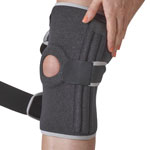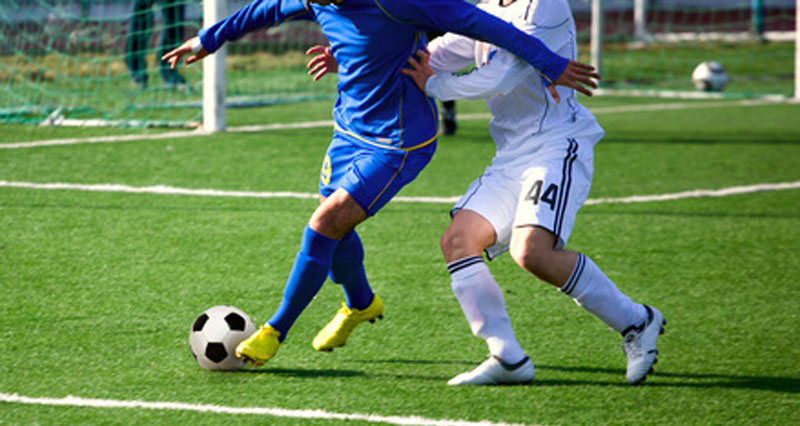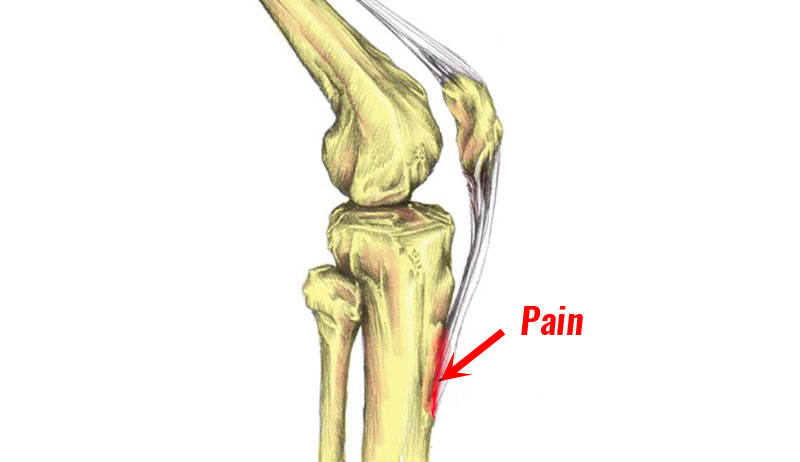The main aim of Osgood Schlatter disease treatment is to reduce pain and inflammation. It includes cold therapy, rest, taping, bracing, and massage. The following treatment methods form part of our full rehabilitation program created by elite sports physiotherapist Paul Tanner.
Who is this program suitable for?
This program is suitable for anyone suffering from Osgood Schlatter Disease.
Author

Paul is head of Medical Services at Millwall Football Club, dealing with all aspects of match and training day sports physiotherapy and medical cover. The Osgood Schlatter program is based on what Paul would do with elite level young players but adapted for use by anyone.
Program structure
The Osgood Schlatter Disease treatment program consists of five phases. In order to progress to the next phase, you must reach specific exit criteria. So whatever type of injury you have, you begin at phase 1 and work through each phase.
The program is criteria based so you start at the beginning of phase 1 and only progress on to the next phase if you reach the specific exit criteria for that phase.
We recommend seeking professional advice if you are unsure before attempting any rehabilitation exercises.

Buy Knee Braces
Osgood Schlatter Disease treatment phase 1
Phase 1 is the acute management stage where the aim is to reduce pain and inflammation and allow your knee to begin to heal. If you continue to play or train you will make it worse and could cause long-term damage.
Cold therapy
Apply a cold compression wrap over the painful area of your knee for 20 minutes every 2 hours.
Rest
Complete rest from running and jumping activities. Work on the upper body or other techniques if possible.
Taping/Bracing
Wear a patella tendon support or use patella taping techniques to help relieve tension on your knee. It can be worn all the time, but especially if you have to be active.
Anti-inflammatory gel
Apply anti-inflammatory gel such as Movelat gel to the affected area. If you are not sure what is available near you, or appropriate then speak to your pharmacist or doctor.
Apply up to 4 times per day.
Massage for Osgood Schlatter disease treatment
Apply deep tissue massage techniques to the quadriceps muscles. Stay well away from the painful area just below the knee.
Massage can be applied daily, as long as there is no significant soreness the day after treatment.
Foam roller
Use a foam roller before stretching. This is a good alternative if massage is not available.
Exit criteria
Before you can progress to phase 2 you must:
• Have complete rest for at least 3 days.
• Applied cold therapy for 20 minutes every 2 hours. Have no pain to touch.
• Pain-free on standing quad stretch.
• Pain-free going up and down stairs.
Access the full Osgood Schlatter Disease treatment program on our mobile app
Osgood Schlatter Disease treatment phase 2
This is the ‘Re-Load’ phase. The aim of phase 2 is to continue to protect the area and improve the condition of the muscles.
Phase 2 comprises:
- Cold therapy
- Taping/Bracing
- Massage/Foam roller
- 6 stretching exercises
- 6 strengthening exercises
- 2 functional exercises
- 2 core exercises
- 1 cardiovascular exercise
Exit criteria
You are ready to move on to phase 3 when:
- Pain-free to touch over tibial tuberosity
- Isometric VMO activation should be pain-free
- Quadriceps stretch should be painless
- Hip flexor stretch should be pain-free
Access the full Osgood Schlatter Disease treatment program on our mobile app
Osgood Schlatter Disease treatment phase 3
The aim of phase 3 is to increase the strength and endurance of the quadriceps whilst maintaining length.
Exit Criteria
In order to progress the Osgood Schlatter treatment program to phase 4 you must:
- Be pain-free through all the exercises
- Running without pain
- Leg strength is 80-90% of the uninjured side
Access the full program on our mobile app
Osgood Schlatter Disease treatment phase 4
The aim of phase 4 is to increase quadriceps muscle strength and endurance and prepare for the return to training/play whilst maintaining length.
It consists of:
- Taping/bracing
- Cold therapy
- Massage
- 5 stretching exercises
- 5 strengthening exercises
- 2 functional exercises
- Running progressions
Exit criteria
To complete the main part of this program and progress to phase 5:
- No pain during any exercises
- Pain-free squat
- Pain-free plyometrics or functional exercises
- No pain when running
- No pain to touch
- Left & right leg has equal strength
Osgood Schlatter Disease treatment phase 5
The aim of phase 5 is to ensure maintenance whilst establishing a return to training.
Access the full program on our mobile app


